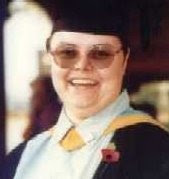
This two-parter was written by "Doctor Who" scriptwriter, Helen Raynor (she's the first female writer of any "New Who" episodes), turning in her first ever "Doctor Who" scripts.
Daleks in Manhattan
The Doctor and Martha land in New York City in 1930, where people are disappearing from Hooverville, a miniature city where the homeless live in the middle of Central Park. The trail to find the missing people leads them into the sewers beneath Manhattan where they encounter a group of men who've been transformed into pig slaves – and the Doctor discovers that the Daleks, who have some sort of diabolical plan for the Empire State Building, are behind it all.
The Daleks of this story are the four remaining members of the Cult of Skaro (Skaro is the planet on which the Daleks originated). The Cult has been created to come up with imaginative ways of surviving (imaginative being the operative word here - Daleks generally don't have much use for imagination), and they are the only four survivors of the Battle of Canary Wharf that we saw in the season 2 two-part finale "Army of Ghosts"/"Doomsday" - the four escaped the Battle by using an "emergency temporal shift" - which lands them in New York in 1930. They've decided that the way to survive is to create Dalek-Human hybrids through genetic experimentation. One of the four Cult members, Sec, assimilates the man who's been helping them to prepare the Empire State Building for their project. He becomes a very weird looking man with a tentacled head and one eye (above left), and rather odd, misshapen hands.
Evolution of the Daleks
After Sec becomes the first Dalek-Human he's ready to implement his plan to create an army of Dalek-Humans to remake Earth into New Skaro. But the "human factor" has unexpected effects on Sec, leading him to alter his plans and enlist the Doctor's help as an ally, a move that makes his fellow Daleks uneasy (to the extent that two of them have a conversation in the sewer that leads to one of them looking over its "shoulder" - metaphorically since Daleks don't have shoudlers! - in a beautifully realised moment of Dalek paranoia that made me laugh out loud).
From Sec's slow development of something that approaches human compassion because of his human side, to the army of Dalek-Humans questioning their orders with a straightforward "Why?", this episode has some surprising moments that make it the stronger of the two. It's also surprising that Sec keeps a bloodthirsty Dalek from killing the Doctor – who at that point is actively shouting at the Dalek to kill him. David Tennant's increasingly multilayered performance as the Doctor is a joy to behold. The Doctor's horror and near-suicidal anger at the death of Solomon is astonishing, as is his confusion and dawning hope at Sec's gentle ascent into humanity. Martha gets some great moments in this episode, including a heartbreaking conversation with Tallulah over the times when, as the Doctor looks at her, she knows "he's just remembering" Rose. Freema Agyeman plays this moment with such anguish that it's enough to make me want Martha to have a lot more screen time than she's actually got so far this season.
My biggest disappointment with the second episode was when the single surviving Dalek (Caan) from the Cult of Skaro does another of those blinking "emergency temporal shifts" and disappears again - though I confess I was relieved that the Doctor didn't shout "Caaaaaaaaaaaaaaannnnnnnnnnnn" after him!
One of my favourite bits was the Doctor discussing the use of music "Music. You can dance to it, sing with it, fall in love to it" - at which point he stares into the eyestalk of one of the Daleks and it "blinks" (closes and then opens the "shutter" in its eyestalk) - which is a fabulous little moment.


No comments:
Post a Comment